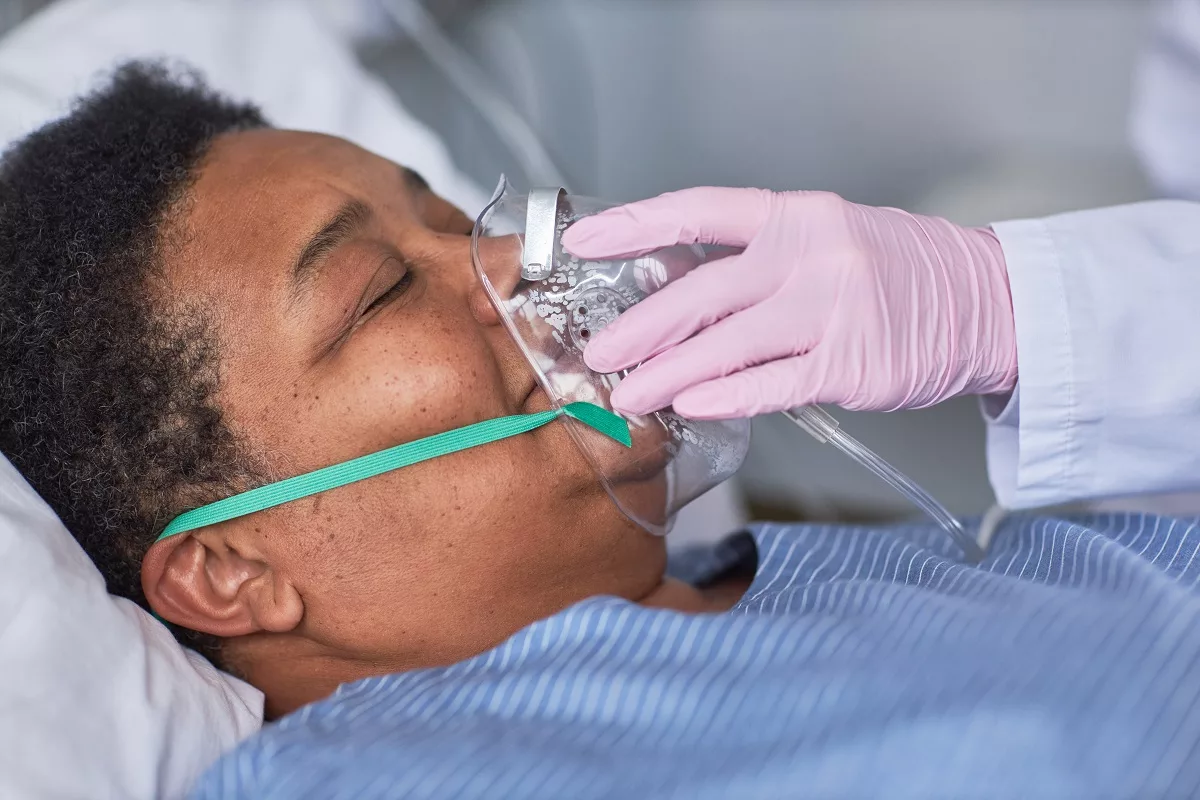A type of cancerous (malignant) tumor that often develops in bone and connective tissue (including fat, muscle, blood vessels, nerves, and other surrounding tissues) is called a sarcoma. The symptoms are often different among people who develop this type of cancer because it depends on the size and exact location of the tumor. Generally, this is a treatable form of cancer, especially if it is found in the early stage. Treatment often includes surgery, radiation therapy, immunotherapy, targeted therapy, chemotherapy, and others.
This type of cancer occurs quite rarely and affects about 1% of all adult cancer diagnoses and roughly 15% of childhood cancer diagnoses. More than 16,000 sarcomas are diagnosed in the United States every year (approximately 4,000 bone sarcomas and 13,000 soft sarcomas).
Furthermore, sarcomas may develop in multiple parts of the body (including from head to toes). For example:
- 40% in the lower extremities (including legs, ankles, and feet)
- 30% in the trunk, chest wall, abdomen (belly), or pelvis
- 15% in the upper extremities (such as arms, shoulders, wrists, or hands)
- 15% in the head or neck
Types of Sarcoma
In general, the medical term “sarcoma” refers to multiple types of cancer that negatively affect bones and soft tissues. Currently, approximately 70 subtypes of sarcoma are recognized.
Bone Sarcomas
In most cases, a sarcoma develops in the bone. More than 30% of bone sarcomas are diagnosed in people younger than the age of 35. Check below some primary types of bone sarcomas:
- Chordoma
- Ewing’s sarcoma
- Fibrosarcoma
- Osteosarcoma (one of the most common types of bone sarcomas)
- Chondrosarcoma
In some cases, people may develop a metastatic sarcoma. It means the cancer begins in another part of the body and spreads to the bones. These include the lungs, kidneys, breasts, prostate gland, and thyroid gland. If you develop a metastatic bone cancer, it may cause functional problems and pain.
Soft Tissue Sarcomas
In such cases, sarcomas begin to develop in the muscle or other connective tissue in the body. This type of sarcoma is mostly diagnosed during adulthood, but a type of soft tissue sarcoma (such as rhabdomyosarcoma) is mostly diagnosed in children. Check below for other types of soft tissue sarcoma:
- Angiosarcoma
- Desmoplastic small round cell tumors
- Gastrointestinal stromal tumor (GIST)
- Leiomyosarcoma
- Myoxofibrosarcoma
- Malignant schwannoma
- Malignant peripheral nerve sheath tumor
- Synovial sarcoma
- Undifferentiated pleomorphic sarcoma
- Liposarcoma
Symptoms
While some types of sarcoma cause mild or no symptoms at all (such as a painless lump under the skin), others may cause moderate to severe symptoms. More severe symptoms often appear when the tumor grows large enough to put pressure on nearby organs and structures. Check below some examples:
- Painless lumps under the skin
- Difficulty moving the arm or leg
- Unusual weight loss
- Back pain
- Pain in the extremities (such as arms or legs) or the abdomen
In some cases, people may develop chronic pain or swelling that usually worsens at nighttime. Generally, there are a lot of health conditions that can cause symptoms similar to sarcomas. That’s why you should visit a doctor if you experience any of the previous symptoms.
Causes
This type of cancer appears like other types when specific cells develop DNA mutations (changes). DNA contains instructions that tell cells when to grow, multiply, and die. However, a mutated DNA gives the cells different instructions, which make them grow and multiply abnormally. These abnormal cells form a mass called a tumor over time. Furthermore, if the tumor becomes large, it tends to break and spread to other parts of the body. In such cases, the condition is called metastatic cancer, which is quite difficult to treat.
Nowadays, experts do not fully understand why these DNA changes happen.
Risk Factors
While it is not clear what exactly causes DNA changes that further lead to sarcomas, physicians have identified some factors that could increase your risk of developing this type of cancer. For example:
- Exposure to certain chemicals – Prolonged exposure to arsenic and other chemicals used to produce plastic (such as vinyl chloride monomer), herbicides (such as phenoxyacetic acid), and wood preservatives (including chlorophenols), the risk of developing sarcoma significantly increases.
- Radiation – Sometimes, people are at increased risk of developing sarcomas due to previous radiation therapy used to treat another type of cancer.
- Lymphedema – Chronic swelling in the legs or arms.
- Genetic disorders – There are some chromosome mutations and inherited disorders that significantly increase the risk of sarcomas. Examples include Werner syndrome, Gardner syndrome, von Hippel-Lindau disease, Gorlin syndrome, tuberous sclerosis, Li-Fraumeni syndrome, retinoblastoma, and neurofibromatosis type 1.
- Race – Black and Hispanic people are more likely to develop sarcomas than other races.
- Age – While some types of sarcoma are more frequently found in children, others are mostly diagnosed during adulthood. For example, bone sarcoma diagnoses happen more in children, teens, and older people (over 65 years old).
- Sex – Men are more prone to develop sarcomas than women.
What Are The Long-term Effects of Sarcoma?
Those who develop this type of cancer may also experience some complications, especially if the tumor is found in advanced stages. Check below some examples:
- Infections
- Bleeding
- Blood clots
- Nerve and blood vessel damage
- Adverse reactions to anesthesia
- Wound complications (including hematomas, dehiscence, seroma, lymphorrhea, skin necrosis, and others)
- Amputation
- Recurrent or metastatic cancer
This document does not contain a full list of sarcoma complications. However, you can consult with your healthcare professional about ways to prevent these complications.
Diagnosis
Sometimes, it is difficult to diagnose this condition because it causes symptoms similar to other diseases. However, the diagnosis often begins with a physical examination and evaluation of the medical and family history. Physicians may ask some questions about the symptoms. To confirm this type of cancer and exclude other diseases that cause similar symptoms, doctors should perform some tests. Check below some examples:
- X-rays – This imaging test is used to take images of bones and soft tissue inside the body.
- CT (computed tomography) scans – These tests are used to get cross-sectional images of different structures and organs in the body (such as bones, soft tissues, and others).
- MRI (magnetic resonance imaging) scans – This is another imaging test used to get more detailed images of the bones or soft tissues. It uses a magnetic field and radio waves to produce images.
- Bone scan – During this test, doctors will inject a small amount of radioactive material to get clearer images. It helps identify bone disorders (such as sarcoma).
- PET (positron emission tomography) scans – This imaging test also uses a glucose tracer that clings to cancer cells. It may show the exact location of the tumor.
- Biopsy – This procedure involves the removal of a small sample of the affected tissue for testing. It helps identify cancerous cells. Commonly, it is the only test that can confirm a sarcoma.
In addition, once you are diagnosed with a sarcoma, physicians may perform other tests to determine the stage (extent) of the cancer. It also helps make the best treatment plan for you.
Treatment
While treatment is often different among people with sarcomas because it depends on several factors (such as age, stage, and size of the tumor, and others), it may involve a team of healthcare professionals. For example:
- Geneticists
- Surgeons
- Radiologists
- Medical oncologists
- Radiation oncologists
- Pathologists
- Psychologists
- Pediatric specialists (healthcare professionals specialized in treating health conditions in children)
- Social workers
Check below the most common treatments often recommended by doctors for people with sarcomas:
Surgery
This treatment is used to remove the tumor. In some cases, surgeons may remove a small amount of healthy tissue that surrounds the tumor to make sure there are no remaining cancerous cells. Sometimes, people need a reconstruction surgery to replace the removed bone.
Radiation Therapy
This therapy uses powerful energy beams to kill cancerous cells. Usually, this energy comes from X-rays, protons, or other sources. During this procedure, the patient is lying on a table while a machine is delivering the radiation to the tumor.
In most cases, doctors recommend internal radiation (also known as brachytherapy) for people with localized sarcoma. This type of radiation therapy can be delivered in two ways such as intra-operative radiotherapy (during surgery) or interstitial brachytherapy (through multiple catheters after surgery).
Chemotherapy
This treatment involves strong medicines that help destroy cancerous cells throughout the body. While most people often get chemotherapy drugs intravenously (IV), a pill form is also available. Healthcare professionals may prescribe chemotherapy before surgery to shrink a large tumor, after surgery to kill cancer cells that may remain even after the removal of the tumor, and in combination with radiation therapy (usually when surgery is not an option).
Immunotherapy
This cancer treatment is also known as biologic therapy, and it involves specific medicines that boost the immune system to find and destroy cancer cells. Commonly, most cancerous cells produce specific substances that help them hide from the immune system. Immunotherapy is often recommended in advanced stages of the cancer or when other treatments do not work.
Targeted Therapy
Physicians also prescribe this treatment in severe cases or when other treatments are not effective. It involves medicines that block a protein in the cancer cell, causing it to die. In other words, target therapy finds and attacks weaknesses in the cancerous cells.
Frequently Asked Questions
What is the survival rate of sarcoma?
Generally, the 5-year survival rate of soft tissue sarcoma ranges between 15% (metastasized) and 81% if the cancer is localized. However, for people who develop osteosarcoma, the 5-year survival rate also ranges from 26% (metastasized) to 77% if the cancer has not spread.
What are the main symptoms of sarcoma?
Usually, people who develop this type of cancer notice a painless lump under the skin. This lump may appear anywhere in the body. When this lump continues to grow, it may cause pain.
Can sarcoma be completely cured?
This type of cancer can be cured if it is found and removed in the early stages. In rare cases, some people with IV sarcomas may be cured if the primary tumor and all areas where the cancer spreads can be removed by surgery. Ask your healthcare professional if you have additional questions.




